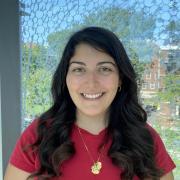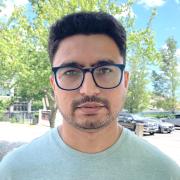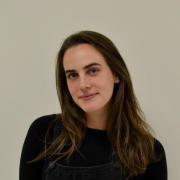Six Brown University students have received graduate awards for the 2024-25 academic year from the Robert J. and Nancy D. Carney Institute for Brain Science. These awards recognize outstanding and productive Ph.D. candidates conducting brain science research.
“This year’s awardees are all stellar researchers at the cusp of making discoveries in their fields,” said Kristin Webster, Carney’s associate director of training and development. “Training the next generation of brain scientists is at the heart of Carney’s mission. We can’t wait to see what these awardees do next.”
Launched in 2001 with funding from the Dana Foundation and now supported by a number of philanthropic partners, the Carney Graduate Awards have helped more than 90 Brown students complete their dissertation research. Recipients have gone on to build productive careers in academia, industry and scientific publishing.
Awards cover costs up to $68,000 that include a stipend, tuition and health care. Awards also fund $2,000 for meeting travel, workshop registration or other professional development costs.
Carney faculty and postdocs select the winners. The awards committee evaluates applicants on scientific merit and vision, research productivity, potential contributions to the Carney community, and potential contributions to promoting diversity, equity and inclusion.
The call for applications for next year’s awards will be in January 2025.
This year’s awardees describe their Ph.D. theses below:
Hannah Doyle, “The neural dynamics of abstract sequence behavior in obsessive-compulsive disorder,” supported by the Dr. Daniel C. Cooper Graduate Award and the Howard Reisman '76 Family Graduate Fellowship Fund.

Symptoms of obsessive-compulsive disorder (OCD) appear as a disruption in a person’s abstract sequential behavior–behavior that’s governed by an order of sequences but not the identity of individual steps, like getting dressed in the morning,” said Doyle, who is conducting her research in the Desrochers Lab. “My research teases out the underlying neural mechanisms of this behavior, which tends to look like over-engagement in ritualistic and repetitive behaviors. So far, I’ve identified key neural dynamics during sequences in patients with OCD, and my next step will be to expand on the current neurobiological models we have of OCD to include cortical regions that haven’t previously been linked to this disorder, with the ultimate goal of informing neuromodulatory treatments for OCD.”
Doyle holds a B.S. in neuroscience from Davidson College.
Jennifer Dumouchel,“Emerging roles of tRNA methyltransferases in neuronal development and intellectual disability,” supported by the JBB Endowed Graduate Fellowship in Brain Science.

“Transfer RNAs (tRNAs) translate genes into the proteins that carry out cellular functions, including those that enable learning and memory. Researchers know that the disruption of enzymes that regulate tRNA function is linked to neurodevelopmental disorders, but we don’t yet understand what critical roles these proteins play in the brain, which is important for developing therapies for treating these disorders,” stated Dumouchel, who conducts research in the O’Connor-Giles Lab. “Because these enzymes have mostly been studied in single-cell organisms, I am using the fruit fly to study how they function in the nervous system. I use CRISPR gene editing to create fly models of disorders in which these genes are disrupted and determine how the nervous system has been impaired using proteomics, imaging and behavioral studies. My goal is to find new therapeutics for neurodevelopmental disorders.”
Dumouchel holds a B.A. in chemistry from Colby College and a M.S. in chemistry from Northeastern University.
Gabriela Molica,“Non-neuronal regulators of oligodendrocyte differentiation in the postnatal optic nerve,” supported by the Robin Chemers Neustein Graduate Fellowship.

"There is no existing cure for multiple sclerosis, a devastating autoimmune disease in which the insulative sheath that enables fast communication between neurons is destroyed. While current therapeutics can prevent new attacks, there is an unmet need for therapies that can repair the insulative sheath and thereby save damaged neurons,” said Molica, who conducts her research in the Mayoral Lab. “The goal of my work is to identify new factors that scientists can exploit to repair this insulative sheath, which is called myelin and is produced by specialized cells called oligodendrocytes. I am using a combination of RNA sequencing technologies, transgenic rodent models and in vitro cell culture techniques to identify the signaling responsible for the creation of new, myelin-forming oligodendrocytes.”
Molica holds a B.S. in psychology from University of Massachusetts Amherst.
Hasib Aamir Riaz, “Single cell molecular profiling in a Christianson Syndrome model system identifies a critical role of neuroinflammation in disease progression,” supported by the Gordon S. Macklin '50 Endowed Fellowship and the David Mahoney Flexible Research Fund.

“Christianson Syndrome is an X-linked disorder characterized by cognitive dysfunction, behavioral disorder and neurologic findings that include seizures,” explained Riaz, who conducts research in the Morrow Lab. “Christianson Syndrome is caused by loss-of-function mutations in a gene known as SLC9A6. The goal of my dissertation research is to identify how both neuronal and glial cells in a rodent Christianson Syndrome model behave in order to help scientists treat or cure this disease. To achieve this, I am using single-nucleus RNA sequencing, along with biochemical and cell biology techniques, to uncover the distinct regulatory mechanisms within each cell type.”
Riaz holds a B.S. in biotechnology and a master’s in molecular biology from University of the Punjab Pakistan.
Max Seppo, “Convergence of behavioral and sensory information in olfactory cortex,” supported by the Brain Science Graduate Research Fund.

“The sensory cortex has traditionally been thought of as a brain area responsible for the processing and representation of physical features of the external world. In the Fleischmann Lab, however, I have replicated unexpected results from other labs showing that neural activity in the sensory cortex–and in my case, the olfactory cortex–is strongly linked to an animal’s spontaneous behavior,” said Seppo. “In my dissertation project, I am conducting experiments to make sense of this surprising finding. In particular, I am testing whether the behavioral signals we observe might be useful for sensory processing within a predictive coding framework, where incoming sensory signals are compared to internally generated sensory expectations. If successful, my results will help scientists reevaluate the role of the sensory cortex, positioning it not as a passive receiver of external inputs, but as a crucial site of interplay and comparison between action and perception.”
Seppo holds a B.A. and an M.A. in neuroscience and behavior from Wesleyan University.
Emma Suneby, “Defining the contributions of synaptic Schwann cells to neuromuscular junction degeneration in ALS,” supported by the Charles Dana Graduate Fellowship.

“Amyotrophic lateral sclerosis (ALS), a devastating, adult-onset neurodegenerative disease characterized by the progressive loss of motor neurons, may be able to be slowed, prevented or reversed by preserving the neuromuscular junction, a synaptic connection between the axon terminal of a motor neuron and a muscle fiber, which degenerates early and progressively throughout the disease. Learning more about the mechanisms that maintain and repair the neuromuscular junction could lead to the development of more effective therapies for ALS,” explained Suneby, who conducts her research in the Valdez Lab. “For my project, I am studying cells called perisynaptic Schwann cells, which maintain and repair the neuromuscular junction in healthy populations and for which we have very little data on in ALS. By defining the cellular and molecular changes perisynaptic Schwann cells undergo in mouse models of ALS, I aim to not only contribute to research on therapies for ALS, but also gain novel insights that may be relevant for how similar cells behave in injury, disease and aging in the brain and spinal cord.”
Suneby holds a B.A. in biochemistry from Connecticut College.